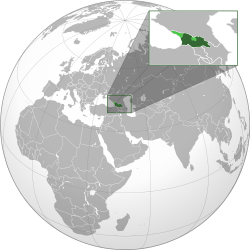Calling within Georgia
- Geographical numbers
0 + Destination area code [2 or 3 digits] + Subscriber's phone number [6 or 7 digits]
For example, to call a landline phone in Tbilisi:
2xx xxxx (within Tbilisi)
0 - 32 - 2xx xxxx (within Georgia)
Originating country's international code + 995 - 32 - 2xx xxxx (from abroad)
00 + 995 + 32 + 2xx xxxx (for example, from EU or Switzerland)
(there are no subscriber numbers that start with other digit than 2 as of September 24, 2025)
- Mobile numbers
0 + Mobile network code (3 digits) + Subscriber's number [6 digits]
To dial a mobile number, for example a Magticom number:
595 + xxx xxx (from mobile network)
0 + 595 + xxx xxx (within Georgia, from landlines)
Originating country's international code + 995 (code for Georgia) - 595 - xxx xxx (from abroad)
00 + 995 + 595 + xxx xxx (for example, from EU or Switzerland)
Calling abroad
The dial plan is as follows: Optional carrier code – 00 - Destination country code - Subscriber number
The following carrier codes are in use for international communication:
For example, to call Geneva (Switzerland) using default international code and pre-selected operator code of Silknet:
00 - 41 - 22 - xxx xx xx
1016 - 00 - 41 - 22 - xxx xx xx
